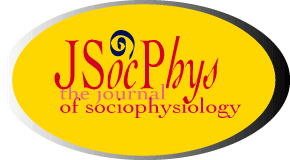abstract Human culture (
art, science, religion) is hypothesized to be an adaptation evolved to exploit (parasitize) the members of a social group in which individuals
exist. As all individuals in a social group act to exploit one another, a state of parasitic
equilibrium (
PE) obtains such that mimicry (cultural tradition) emerges and hypocrisy (illusion of cooperativity) is maintained. Language, by
all means a means of culture and tool of mimicry, is an intraspecific exploitative adaptation (IEA) unique, as far as is known, to the species
Homo sapiens sapiens;
art, science, and religion are particular, historically and geographically sensitive (variable), instantiations of the mimicry-hypocrisy complex (MHC). Mental “illness” (suffering) is an ineluctably predicted emergent property (
EP), or symptom, of the constantly evolving state of
PE, resulting in (i) forms of exploitation inappropriate to a given cultural tradition, or MHC, at any given time and place; (ii) attempts by individuals to maintain
PE for any given MHC; (iii) differential levels of success of exploitation; and (iv) fissioning, fusioning and reincorporation of MHCs contributing toward new adaptive peaks and cultural evolution.
[Full Text]
